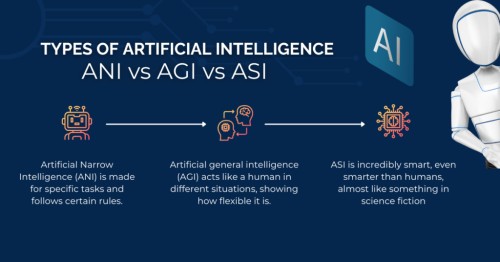To be honest, there isn’t a straightforward answer. Even experts can’t seem to agree on it. Some say it’s a term from way back in 1954 that doesn’t fit today, while others define it as machines that can learn, reason, and act on their own.
The real trouble lies in the word “intelligence.” While we all understand “artificial,” psychologists still can’t decide what “intelligence” means in humans, let alone in computers.
Adding to the confusion is that what qualifies as AI keeps changing. There’s something called the AI effect, which means that as soon as we figure out how to do something with computers, we stop calling it AI. For example, years ago, people thought a computer needed some kind of artificial intelligence to read text, but now that’s just a regular feature on your phone’s camera app. Even chatbots that talk to you are starting to seem less special as we learn more about them.
Categories of ARTIFICIAL INTELLIGENCE
So instead of using a confusing definition of AI, let’s focus on three clearer ones:
Artificial Narrow Intelligence (ANI)
Artificial Narrow Intelligence (ANI) is like a computer that’s really good at one specific thing. Some examples include chatbots like ChatGPT, language models like GPT-4, image generators like DALL-E 2, self-driving cars, voice assistants like Alexa and Siri, and complex algorithms used in various fields like recommendation algorithms for Netflix.
Artificial General Intelligence
Artificial General Intelligence (AGI), also known as strong AI, is an AI that’s as smart as or even smarter than humans. It’s not limited to specific tasks like ANI. While some argue that models like ChatGPT show signs of AGI, most researchers don’t agree. AGI would be able to understand and do almost anything a human can, like making coffee or attending university.
Artificial Super Intelligence (ASI)
Artificial Super Intelligence (ASI) is the most advanced form of AI, surpassing human intelligence by far. Think of it as the supercomputers you see in sci-fi movies. We’re nowhere near developing one yet, but it’s a topic of debate among experts.
Curabitur varius eros et lacus rutrum consequat. Mauris sollicitudin enim condimentum, luctus enim justo non, molestie nisl.
So instead of using a confusing definition of AI, let’s focus on three clearer ones:
The Future of AGI: Uncertain Timelines and Changing Definitions
When might we see AGI? Opinions vary widely. Some argue we already have it, others claim it’s unattainable, and still, others predict it’s just around the corner.The term AGI is gaining traction because tools like ChatGPT are challenging us to reassess
The term AGI is gaining traction because tools like ChatGPT are challenging us to reassess what we mean by AI.
what we mean by AI. While these tools are remarkable, they’re nowhere near the sci-fi AI depicted in movies like Star Trek.
In essence, AGI is an AI that could easily fit into the cast of a space opera



